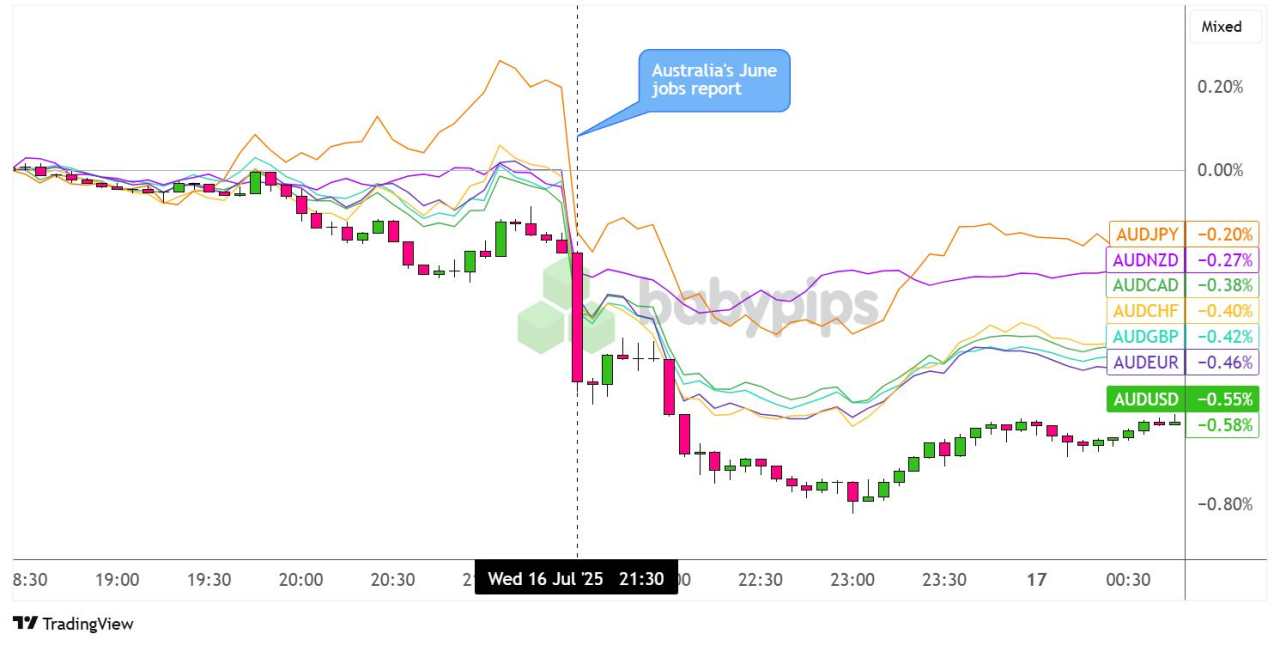Australia’s labor market showed signs of cooling in June 2025, with the unemployment rate climbing to 4.3% on a seasonally adjusted basis and employment growth falling significantly below estimates at a meager 2K increase.
Although this represented a rebound from the earlier 1.1K reduction in hiring, the actual employment change figure fell short of the 21K consensus gain.
Key Points from the June Employment Report
- Unemployment rate increased to 4.3% (seasonally adjusted) from 4.1% in May, marking the highest level since early 2024
- Employment growth stalled with only 2,000 net jobs added (seasonally adjusted), well below expectations and significantly slower than previous months
- Full-time employment declined by 38,200 positions while part-time employment increased by 40,200, suggesting a shift toward less secure work arrangements
- Participation rate edged higher to 67.1% (seasonally adjusted), indicating more people entering the job market but struggling to find work
- Underemployment rate rose to 6.0% from 5.9%, pointing to increased labor market slack
- Hours worked decreased to 1.974 billion in seasonally adjusted
Link to official ABS Australia Labour Force Report
The rise in unemployment to 4.3%, combined with the shift toward part-time employment, suggests businesses may be adopting a more cautious approach to hiring.
The increase in the participation rate to 67.1% indicates that more Australians are actively seeking work, but the inability of the economy to absorb these job seekers at the same pace as previous months points to a cooling labor market.
Market Reactions
Australian Dollar vs. Major Currencies: 5-min

Overlay of AUD vs. Major Currencies Chart by TradingView
The Australian dollar, which had been consolidating against most of its peers prior to the release, experienced immediate and substantial selling pressure following the release, with the currency declining across the board.
A few hours after the report’s release, AUD is down 0.58% to the U.S. dollar and 0.42% against the British pound. The Aussie managed to keep its losses limited against NZD (-0.27%) and JPY (-0.20%).
Still, the broad-based decline suggests markets interpreted the data as evidence of a weakening domestic economy that could challenge the RBA’s recent shift to a more neutral stance. Currency traders likely focused on the combination of rising unemployment, slowing employment growth, and the shift from full-time to part-time positions as indicators of labor market deterioration.


加载失败()